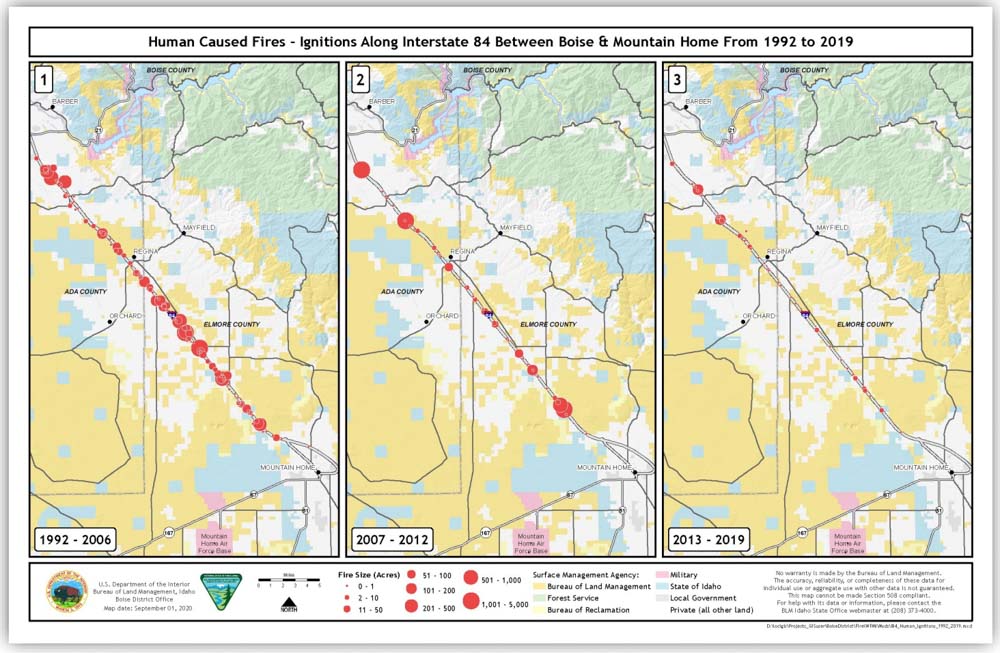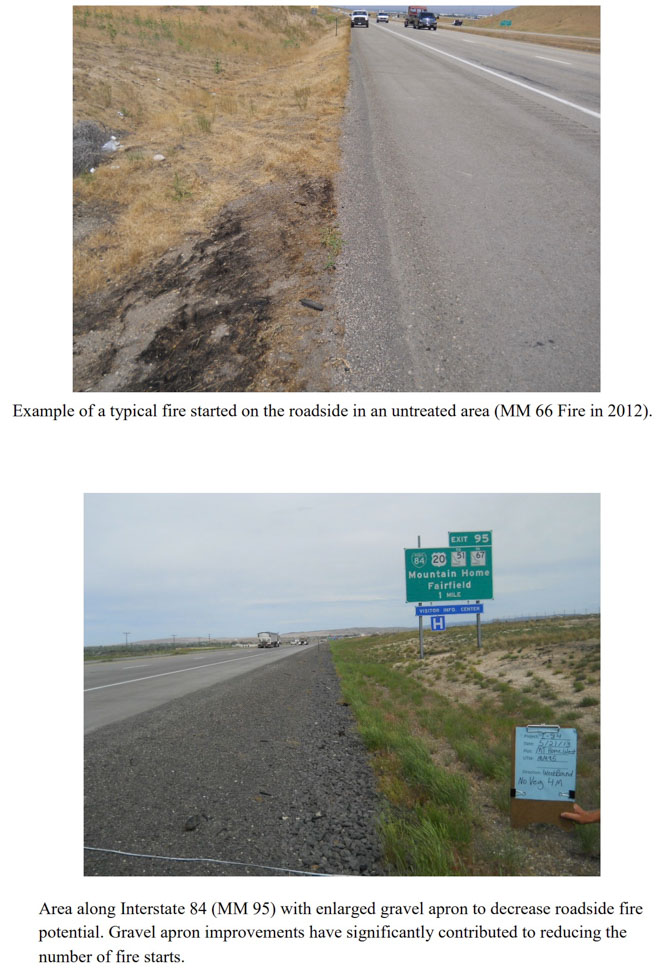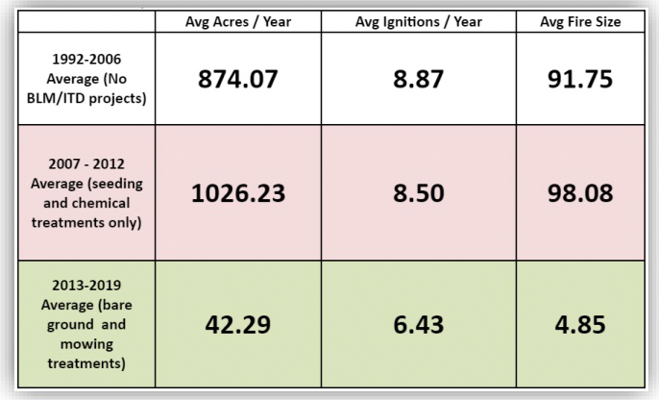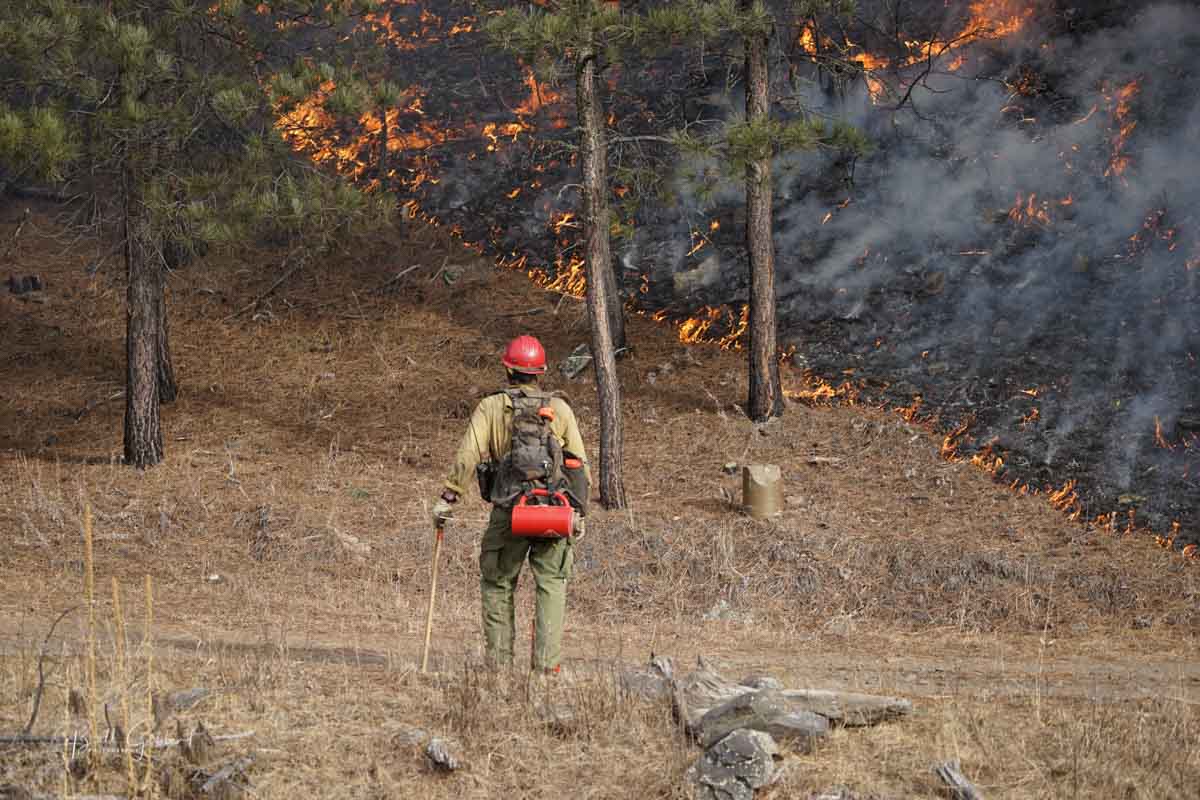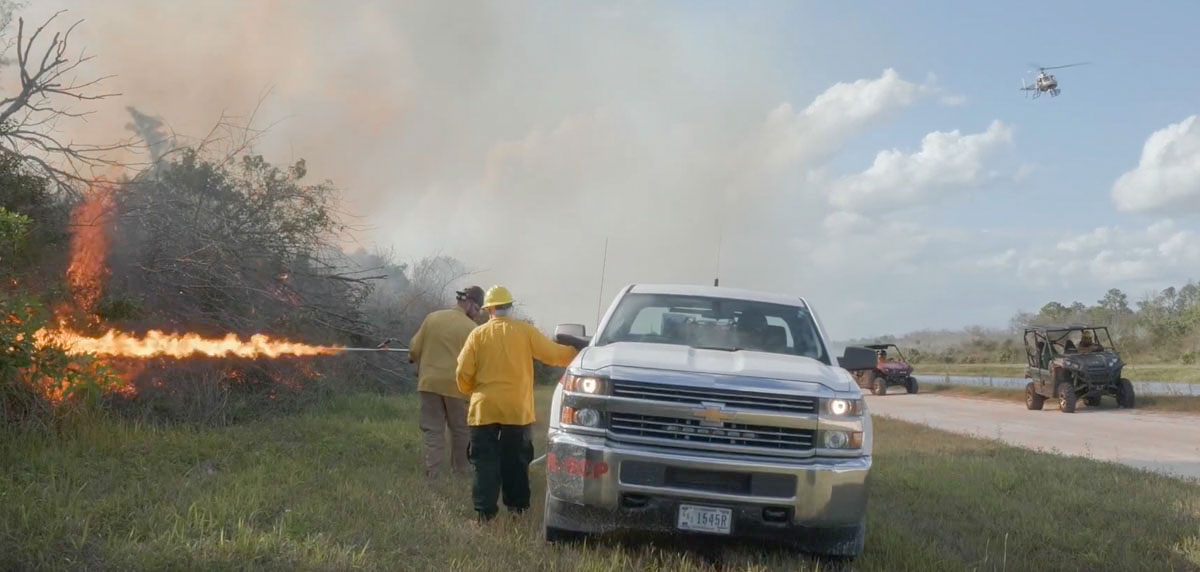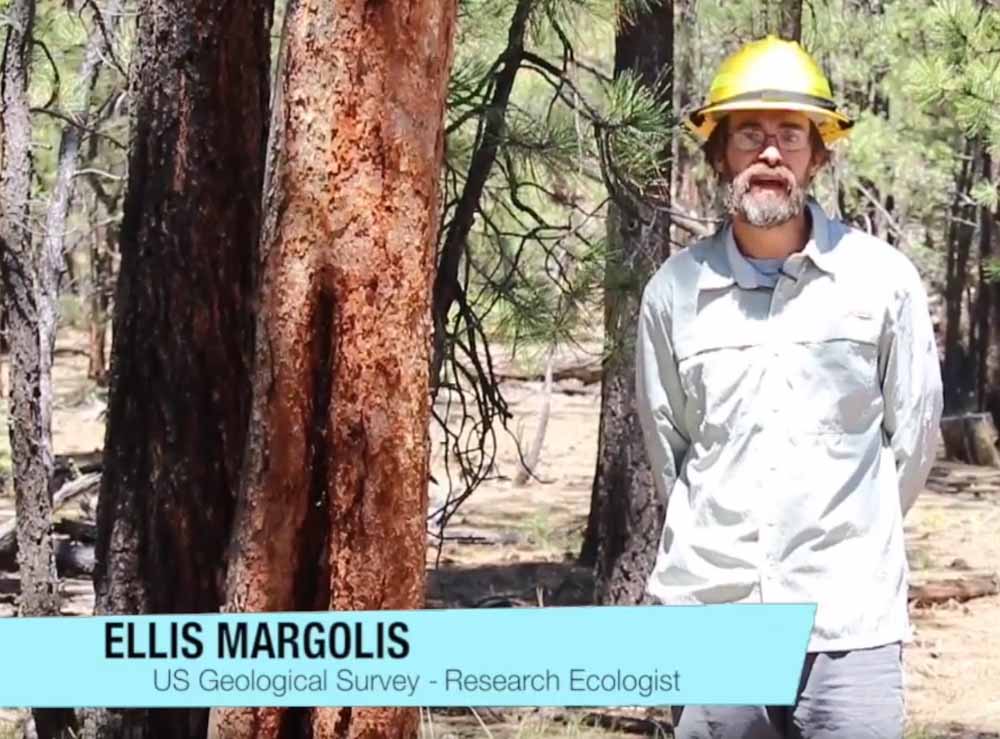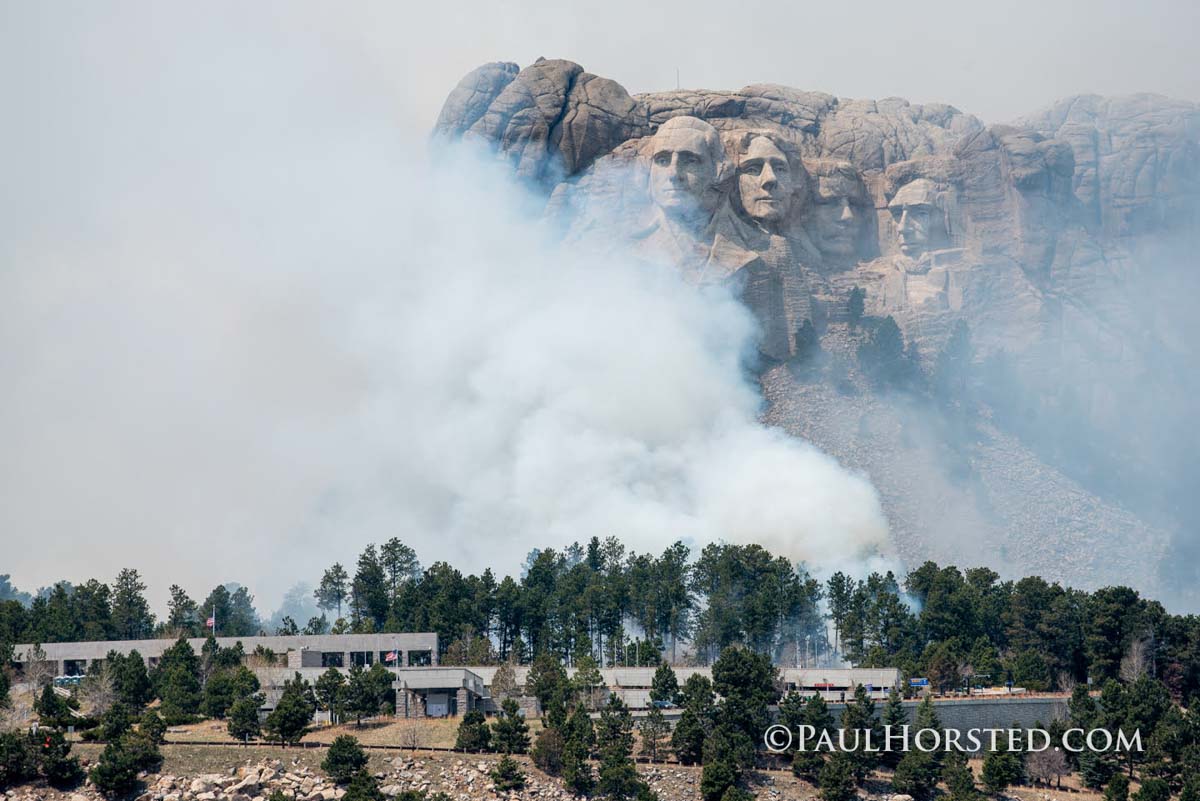
Intuitively we might think that fuel reduction treatments and prescribed fire would lead to more resistance to drought and attacks by beetles. While that is sometimes the case, it turns out that following the extreme 2012-2016 drought in California, prescribed burning increased beetle infestation rates and increased mortality of red fir and sugar pine in an area studied by scientists.
Researchers studied 10,000 mapped and tagged trees in a mixed‐conifer forest following mechanical thinning and/or prescribed burning treatments in 2001 through the extreme drought in California. The work was conducted in the Teakettle Experimental Forest (36°58′ N, 119°2′ W) located in the High Sierra Ranger District of Sierra National Forest, in California’s Sierra Nevada. Elevation of the forest ranges from 1,880 to 2,485 m.
While prescribed burning is an important tool for increasing resistance to wildfire their results suggest prescribed burning does not necessarily also instill drought resistance.
Below is an excerpt from a paper titled, “Do forest fuel reduction treatments confer resistance to beetle infestation and drought mortality?” It was written by: Z. L. Steel, M. J. Goodwin, M. D. Meyer, G. A. Fricker, H. S. J. Zald, M. D. Hurteau, M. P. North, and published by the Ecological Society of America January 22, 2021.
Management challenges
Density reduction treatments that rely on mechanical thinning alone had neutral to positive effects on conifer survival during the 2012–2016 drought (Figs. 7, 8). The overstory treatment that removed medium to large trees (e.g., ≥25 cm) was most beneficial to residual individuals, suggesting such a strategy could be used broadly to increase drought resilience for some species (i.e., Jeffrey pine and white fir). While removal of smaller trees (e.g., ≤25 cm) may be less effective at mitigating drought mortality, treatments focused on ladder and surface fuels may still be preferred when considering non‐drought objectives such as reducing fire hazard or maintaining wildlife habitat (Stephens et al. 2012).
Prescribed burning appears less effective than mechanical thinning at reducing drought mortality and in some cases can lead to higher beetle infestation and mortality rates (Fig. 8). This is most striking in the case of large sugar pines which died at much higher rates in prescribed burn plots during the drought. The negative effect of burning on tree survival is somewhat surprising given that the fire regime under which these forests developed was characterized by frequent (i.e., 11–17 yr) low‐ to moderate‐severity fire (North et al. 2005, Safford and Stevens 2017), and that the prescribed burn occurred approximately a decade prior to the drought.

Further, van Mantgem et al. (2016) observed decreased tree mortality associated with prescribed fire elsewhere in the Sierra Nevada following the initial two years of California’s drought, and Meyer et al. (2019) found no difference in mortality between paired burned and unburned plots in red fir forests during the middle and late periods of the drought. The forests Meyer et al. (2019) sampled were at higher elevations than Teakettle where soil moisture is substantially higher and temperatures lower.
The results presented here could be unique to the Teakettle Experimental Forest, but we suspect they are more likely attributable to the historic severity of the 2012–2016 drought. When beetle populations are less than epidemic such as at higher elevations, during moderate droughts, or early in severe droughts, previous fire and its associated reduced density may be neutral or ameliorating for conifer mortality.
Our sugar pine results may indicate a tipping point beyond which the combination of extreme water stress from drought, bark beetle outbreaks, and fire result in increasingly high rates of tree mortality (Nesmith et al. 2015), and subsequent forest structural changes outside the natural range of variation (Young et al. 2020).
These results suggest cautious low‐intensity and small (i.e., stand) scale prescribed burning, as it is often applied by managers, may only benefit forests under short duration drought stress while contributing to higher mortality in red fir and sugar pine during prolonged and exceptional droughts.
High mortality rates of large sugar pines may be related to prescribed fires consumption of deep litter and duff layers that have accumulated around the base of pine species under fire suppression, suggesting removal of litter and duff through raking could protect individual trees. Nesmith et al. (2010) found raking increased survival and reduced bark beetle activity when fire intensity was moderate (<80% crown scorch) and when fuel depth was ≥30 cm. Thus, protecting individual trees of high ecological value may be possible prior to prescribed burns. However, such targeted measures are infeasible at broad scales in fire‐prone landscapes of the Sierra Nevada. In the long run, retaining sugar pine in these pyrogenic landscapes may hinge on fostering sunny, bare mineral soil conditions favorable for sugar pine regeneration and in the future reducing surface fuels on a regular basis.

Treatment effects on large diameter trees are often the focus of management restoration efforts since these structures have been reduced from past logging, take a long time to develop, and are associated with important ecosystem services (e.g., sensitive species habitat and carbon storage). Treatments using only thinning consistently reduced mortality of large (>75 cm DBH) trees across species, albeit with different effect sizes. For incense‐cedar and especially white fir, there was a greater reduction in mortality for small versus large trees, which are often the target of fuel reduction treatments. Prescribed fire has mixed effects, reducing mortality of large Jeffrey pine and slightly reducing small white fir mortality when combined with thinning, but increasing mortality of large red fir, incense‐cedar, and significantly increasing large sugar pine mortality.
While prescribed burning is an important tool for increasing resistance to wildfire (Stephens and Moghaddas 2005, Prichard et al. 2010), our results suggest such fuel treatments do not necessarily also instill drought resistance. There is general benefit to all species in reducing density, but the means (i.e., mechanical vs. prescribed fire) of treatment matters, suggesting caution in widespread use of fire in drought‐prone areas where managers want to retain large sugar pines and red fir.

